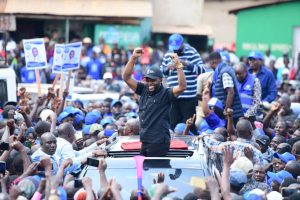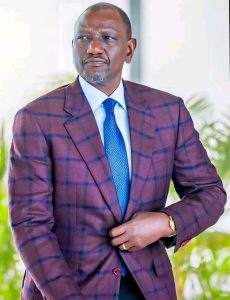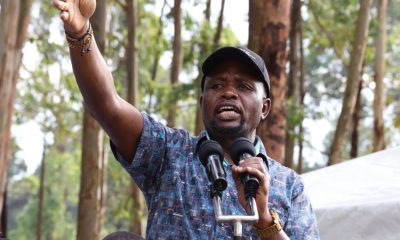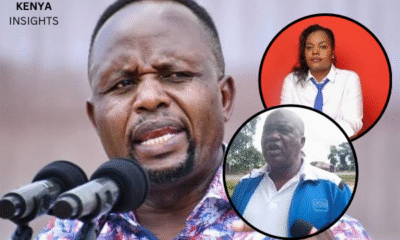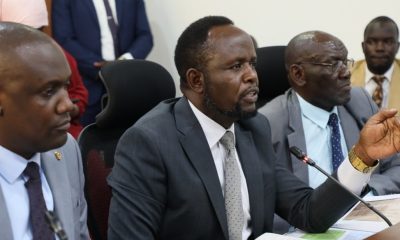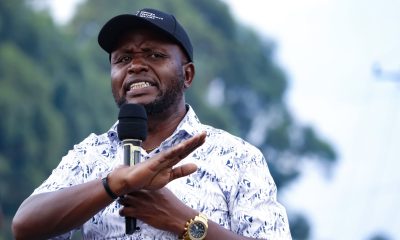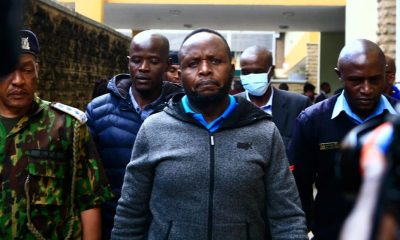Opinion
Why DAP-K is At The Edge of Collapse As Leadership Wars Between Natembeya and Wamalwa Escalate
Governor Natembeya’s rise within DAP-K represents a classic case of political miscalculation that threatens to destroy the very platform he seeks to control.
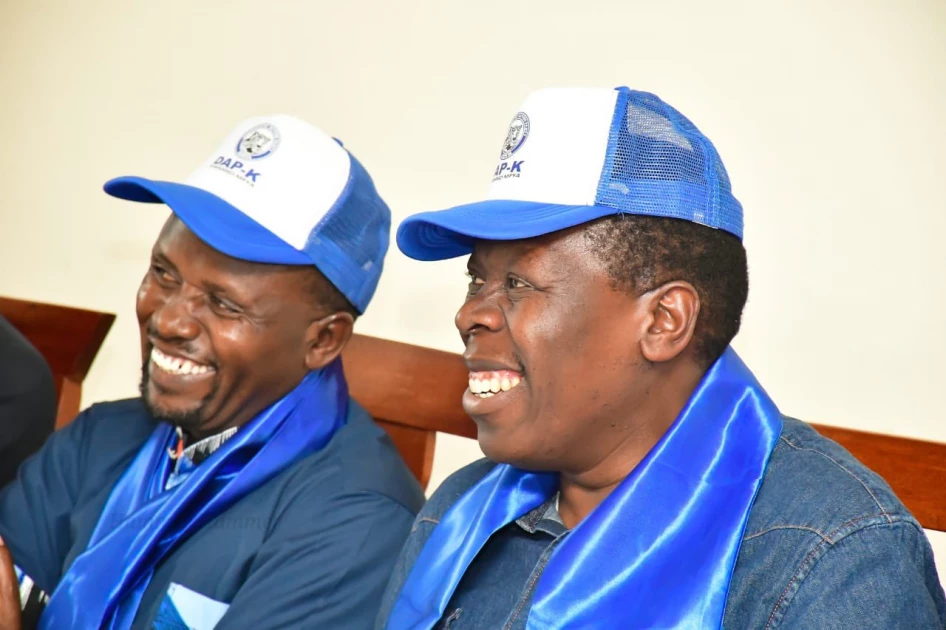
The Democratic Action Party of Kenya (DAP-K) finds itself teetering on the precipice of institutional collapse as an increasingly vicious leadership battle between party leader Eugene Wamalwa and Trans Nzoia Governor George Natembeya threatens to tear apart what was once considered Western Kenya’s most promising political vehicle for 2027.
What began as ideological differences in June 2025 has morphed into a full-blown existential crisis that exposes fundamental weaknesses in DAP-K’s organizational structure and threatens to render the party irrelevant in Kenya’s evolving political landscape.
The current crisis reached fever pitch when Natembeya and his allies formally petitioned the DAP-K leadership to convene both a Special National Executive Council (SNEC) and National Governing Council (NGC) meeting to deliberate on Wamalwa’s leadership style and overall direction of the party.
This unprecedented move signals a complete breakdown of internal party cohesion and democratic processes.
The Strategic Stakes: More Than Just Party Politics
The battle for DAP-K’s soul represents far more than personal ambitions—it embodies the larger struggle for political supremacy in Western Kenya, a region that has historically been crucial in determining Kenya’s presidential outcomes.
The party’s potential collapse would create a dangerous political vacuum at a critical juncture when the region needs unified leadership ahead of the 2027 elections.
Wamalwa has served as DAP-K’s political figurehead since the 2022 General Election, positioning himself as the de facto Western Kenya kingpin after Mudavadi disbanded ANC and joined President Ruto’s United Democratic Alliance (UDA).
His removal would effectively hand Western Kenya’s political initiative to pro-government forces, fundamentally altering the region’s opposition credentials.
The crisis has exposed critical flaws in DAP-K’s institutional framework. DAP-K Secretary General Dr Eseli Simiyu has confirmed receipt of the petition, noting that he is in the process of calling a meeting of the party’s National Management Committee (NMC) to address the issues raised.
However, the fact that party officials who have unlimited access to him have opted to engage a lawyer to communicate with him and even offered to sponsor party organ meetings demonstrates a complete breakdown of internal communication channels.
The Democratic Action Party (DAP-K) has resolved to refer all disputes to its Internal Disputes Resolution Committee, following reports of growing divisions that have resulted in the emergence of two rival factions within the party.
This referral to dispute resolution mechanisms suggests the party acknowledges its inability to resolve the crisis through normal democratic processes.
The Natembeya Factor: Ambition Meets Political Reality
Governor Natembeya’s rise within DAP-K represents a classic case of political miscalculation that threatens to destroy the very platform he seeks to control.
According to party insiders, Natembeya’s support base within the party includes chairman David Muchele and assistant secretary David Masanja, but this limited support base contrasts sharply with his outsized ambitions.
Despite being the third deputy party leader, Natembeya is neither a member of the NEC nor the NMC, highlighting the structural impossibility of his power grab.
His exclusion from key decision-making bodies makes any legitimate path to party leadership extremely difficult, forcing him into increasingly desperate and potentially destructive tactics.
Trans Nzoia County Assembly members, elected on the DAP-K ticket, called for Wamalwa to relinquish his leadership role in favour of Natembeya, led by Hospital Ward MCA Erick Mwangale Wafula.
However, this local support base appears insufficient to challenge Wamalwa’s broader institutional backing.
The Loyalty Test: MPs and Leaders Choose Sides
The crisis has forced DAP-K’s elected officials to declare their allegiances, creating irreparable divisions.
Mumias East MP Peter Salasya has hinted at quitting the DAP Kenya party after party leader Eugene Wamalwa accused him of plotting a coup in the political outfit. Salasya’s potential departure would represent a significant blow to the party’s parliamentary representation and signal broader institutional instability.
Paul Ajiba, maintained that despite Natembeya’s alleged plotting, Wamalwa enjoys stronger support within the party’s hierarchy.
He cited the support of Secretary General Eseli Simiyu, first and second deputy party leaders Athanus Wafula Wamunyinyi and Ayub Savula, as well as several MPs, MCAs, and county chairpersons. This institutional support gives Wamalwa a significant advantage, but the public nature of the dispute has damaged the party’s credibility regardless of the outcome.
External Manipulation: The State Factor
Perhaps most damaging to DAP-K’s long-term prospects are allegations of state interference in the leadership crisis.
Wamalwa’s allies have escalated the matter, directly accusing President William Ruto of allegedly backing Natembeya in an orchestrated effort to destabilise DAP-K — a party they insist has emerged as a formidable political force in Western Kenya.
Mumias East MP Peter Salasya declared on his Instagram page that he would use all means at his disposal to prevent Natembeya from being used by the State to seize control of DAP-K.
“The State has assured Natembeya that it would help him stage a coup in DAP-K and then hand the party over to the government,” Salasya claimed.
These allegations, whether true or false, have introduced an element of external manipulation that fundamentally undermines the party’s autonomy and democratic processes.
The perception that Natembeya might be a state project has poisoned internal party dynamics and made reconciliation increasingly difficult.
The Failed Alternative: Lessons from CODK
Natembeya’s desperation becomes clearer when viewed against his previous political failures.
Ajiba further claimed that Natembeya’s ambition to take over the DAP-K leadership stems from the failure of his previous attempt to launch a party — Conservation of Democracy in Kenya (CODK) which flopped due to its lack of traction in the region.
This background reveals Natembeya as a leader without a natural political base, making his hostile takeover attempt a last-ditch effort to secure political relevance ahead of 2027.
His failure to build CODK from the ground up demonstrates questionable political judgment that bodes ill for any future leadership role.
The Electoral Mathematics: 2027 Implications
The timing of this crisis couldn’t be worse for Western Kenya’s political interests.
With former Prime Minister Raila Odinga who previously commanded strong support in the region now part of Ruto’s broad-based government, and some of his allies shifting allegiance to back the president’s 2027 re-election bid, Wamalwa’s DAP-K has been working to occupy the vacuum left in the region’s political leadership.
A collapsed or severely weakened DAP-K would leave Western Kenya without a credible opposition vehicle, potentially handing the region’s electoral influence to the ruling party by default.
This represents a strategic disaster for opposition politics and Western Kenya’s bargaining power in national politics.
Institutional Remedies: The Path Not Taken
The crisis exposes DAP-K’s failure to develop robust conflict resolution mechanisms. According to Weswa, any decision to replace the party leader must be made by the National Executive Council (NEC), yet the party seems unable to convene credible democratic processes to address the dispute.
The party’s constitution appears inadequate to handle succession disputes, particularly when they involve external manipulation and allegations of state interference. This institutional weakness makes DAP-K vulnerable to future crises even if the current dispute is resolved.
The Propaganda War: Truth as Casualty
Trans Nzoia Governor and Democratic Action Party of Kenya (DAP-K) deputy party leader George Natembeya has denied attempting to forcefully wrestle the leadership of the party from party leader Eugene Wamalwa, terming reports as unfounded.
However, his denials ring hollow against the mounting evidence of coordinated efforts to undermine Wamalwa’s leadership.
In a fiery press statement released on X by the faction’s leader, Eugene Wamalwa, on Friday, August 1, 2025, the DAP-K faction said that Natembeya, once seen as a key pillar in the party, has now turned rogue, plotting an unconstitutional takeover to unseat Wamalwa.
This public exchange of accusations has transformed internal party disputes into a media spectacle, further damaging the party’s credibility and making reconciliation more difficult.
The leadership crisis has practical implications for party operations and resource mobilization.
Internal disputes typically drain financial resources, reduce donor confidence, and limit the party’s ability to prepare for elections.
The uncertainty surrounding leadership makes long-term planning impossible and reduces the party’s attractiveness to potential defectors from other parties.
Conclusion: A Party at the Crossroads
DAP-K’s current crisis represents more than a leadership dispute—it embodies a fundamental test of institutional resilience and democratic governance within Kenya’s political parties.
The party’s inability to resolve this conflict through established democratic processes exposes broader weaknesses in Kenya’s political party system.
The stakes extend far beyond personal ambitions. DAP-K’s collapse would create a political vacuum in Western Kenya at a critical juncture, potentially handing electoral advantage to the ruling party and undermining opposition politics in one of Kenya’s most electorally significant regions.
For Natembeya, the crisis represents a high-stakes gamble that could either catapult him to regional leadership or permanently damage his political career.
For Wamalwa, it’s a test of his ability to maintain institutional control against internal rebellion and external manipulation.
The resolution of this crisis will likely determine not only DAP-K’s survival but also the broader configuration of opposition politics in Western Kenya ahead of the 2027 elections.
Without immediate intervention and genuine commitment to democratic processes by all parties, DAP-K risks joining the long list of Kenyan political parties that promised much but delivered little due to internal contradictions and leadership failures.
The party stands at a crossroads: embrace democratic resolution and institutional strengthening, or continue down the path of destruction that threatens to render it politically irrelevant when Western Kenya needs strong opposition leadership most.
Kenya Insights allows guest blogging, if you want to be published on Kenya’s most authoritative and accurate blog, have an expose, news TIPS, story angles, human interest stories, drop us an email on [email protected] or via Telegram
-

 Business2 weeks ago
Business2 weeks ago‘They’re Criminals,’ Popular Radio Presenter Rapcha The Sayantist Accuses Electric Bike Firm Spiro of Fraudulent Practices
-

 Business1 week ago
Business1 week agoIt’s a Carbon Trading Firm: What Kenyans Need to Know About Spiro’s Business Model Amid Damning Allegations of Predatory Lending
-

 Business1 week ago
Business1 week agoManager Flees Safaricom-Linked Sacco As Fears Of Investors Losing Savings Becomes Imminent
-
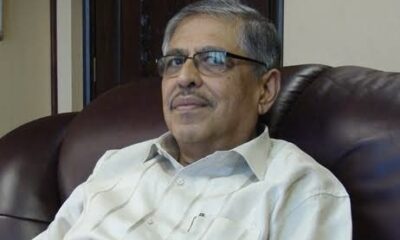
 News1 week ago
News1 week agoWoman Accused in High Defamation Blames AI As Case Exposes How Mombasa Billionaire Mohamed Jaffer Allegedly Sponsored Smear Campaign Linking Joho’s Family To Drug Trafficking
-
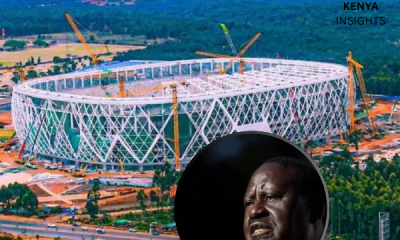
 Investigations2 weeks ago
Investigations2 weeks agoDisgraced Kuscco Boss Arnold Munene Moves To Gag Media After Expose Linking Him To Alleged Sh1.7 Billion Fraud
-
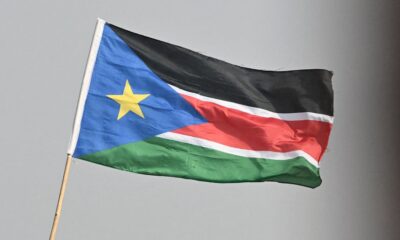
 Africa2 weeks ago
Africa2 weeks agoDisgraced Oil Trader Idris Taha Sneaks Into Juba as Empire Crumbles
-

 Investigations2 weeks ago
Investigations2 weeks agoFraud: How Sh235 Million Donor Cash For Nyamira Residents Was Embezzled Through Equity Bank Under Governor Nyaribo’s Watch
-

 Investigations1 week ago
Investigations1 week agoIntelligence Report Links Budding Politician James Mabele Magio To International Scammers Ring

